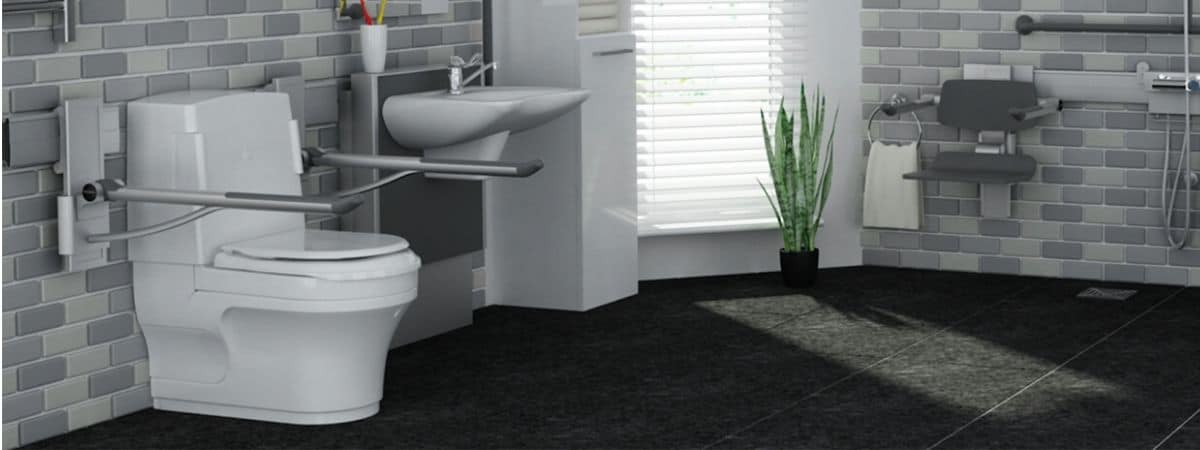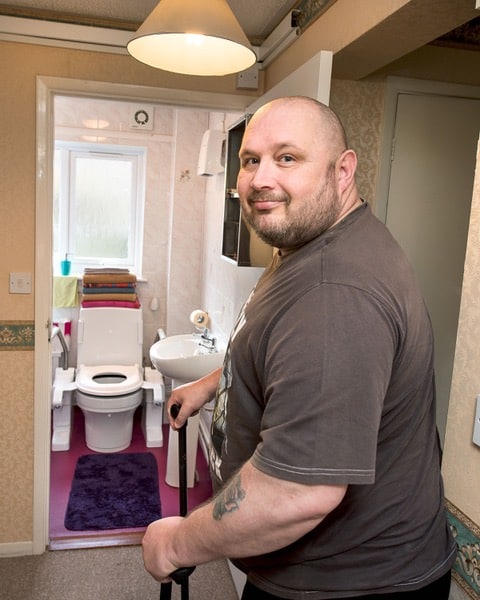
Toilet troubles and how to avoid them
Going to the toilet: it’s something we all do, on average 8 times a day(1). In fact, we spend six months of our lives on the toilet.
It not only takes a lot of time, it represents a lot of physical and mental effort ( consciously and subconsciously): the processes of preparing ourselves, adjusting clothing, physically sitting down, moving our bladder and/or bowel, cleaning ourselves, and then making ourselves presentable for the world again.
If you rely on a carer to help you, it gets even more complicated, and potentially unsafe, as they have to physically move you, balance and support you whilst they clean you, and assist in the transfer process on and off.
There are a few simple things that we can all do- whether the person “going” or a carer supporting someone to ‘go”, that can make the getting on and off process at least easier- and safer.
Everyone is different
No two people are the same. Just because you stand with your back to the WC, adjust clothing, and sit then tear off a couple of sheets of paper and wipe from behind does not mean that’s how everyone does it.
Toilet transfer is a multi-faceted process. How you think you do it may differ significantly from the reality. It may vary depending on the time of day, level of fatigue, how body and bodily functions change through the day.
It depends on:
- Ability to stand
- Balance
- Core strength
- Flexibility
- Peripheral strength
- Understanding the need to use the toilet
- Sequence
- Undertaking personal cleaning
- Understanding/ retaining instructions
Measurement of success
It is not just your abilities, but the environment around the WC- how you interact with it to perform the task- if you are mobile, how do you get on, off- do you use the washbasin to lean on, where’s the toilet paper, how easy is that to reach, do you feel safe when leaning forward to wipe yourself?
If using a walking frame, wheelchair, is there sufficient space in which to turn and manoeuvre?
Sometimes, a simple change in the process may enable safe transfer without assistance. If there is a convenient, secure fixture to hand, why not use that to lean on for support? Or it could be something as simple as wrapping a few sheets of tissue round your hand to enable a swipe rather than a wipe to clean, or slowing down the movement.
Equipment such as a commode frame over the WC, a grab rail or drop-down support arm may provide the minimal level of additional support and security required to empower safe transfer.
Further intervention would involve minor adaptation.
Replacement of the standard seat with a raised seat is one of the most common forms of adaptations undertaken(2). Variations such as raised seats with integrated support arms, bariatric (aka monk) benches with or without support arm(s) and toilet lifters all play a part.
Bear in mind with toilet lifters, most lift and tilt. The Aerolet toilet lifter offers a choice of vertical lift, or lift and tilt. The choice depends on the client’s body strength, balance, and leg joint flexibility, and user preference: some people feel the tilt action makes them feel unstable.
A “major” adaptation could involve replacement of the conventional WC with a wash dry toilet, that obviates their need to manually cleanse.
A wash dry toilet such as a Closomat (the brand leader, and only one designed and built in Britain) also gives you improved hygiene: the douche is specifically designed to deliver an effective, targeted, thorough and consistent process to leave your bottom clean and dry without any residue left in skin folds.
The legalities
As part of the Care Act 2014, you have the right of choice: you should be given the appropriate information to make an informed decision about what is right for you, whether you are still in your own home, or in a residential care environment.
That choice can be the difference between you feeling comfortable with the solution, and willing to use it, whether it is a change to your home environment or of your home environment.
“Obliging people to have things they do not like, or about which they have reservations may result in wholly wasted expenditure (2))
The right help be it in changes to the way you do something, or the fixtures and fittings, will empower you to keep your independence in one of the most intimate tasks we do in daily life. The key is to talk to people who know, and understand, your support network be it family, friends, healthcare professionals. Or just log on and ‘LiveChat’ with us, email or pick up the phone to us: we talk toilet all day, every working day.
LiveChat: https://direct.lc.chat/11086092/
Tel 0161 969 1199
References:
- NHS health bladder guide
- Heywood, 2001
The post Toilet troubles and how to avoid them appeared first on UK Care Guide.
source https://ukcareguide.co.uk/toilet-troubles-and-how-to-avoid-them/home-care/
No comments:
Post a Comment